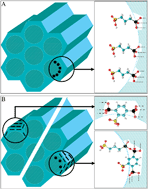Proton transport in functionalised additives for PEMfuel cells: contributions from atomistic simulations†
Abstract
The conventional

- This article is part of the themed collection: Nanoscaled Inorganic Materials by Molecular Design
* Corresponding authors
a
Bremen Center for Computational Materials Science (BCCMS), Universität Bremen, Am Fallturm 1, 28359 Bremen, Germany
E-mail:
toelle@bccms.uni-bremen.de
Fax: +49 421 21862770
Tel: +49 421 21862338
b Ruhr-Universität Bochum, Lehrstuhl für Technische Chemie, Universitätsstr. 150, 44801 Bochum, Germany
The conventional

 Please wait while we load your content...
Something went wrong. Try again?
Please wait while we load your content...
Something went wrong. Try again?
P. Tölle, C. Köhler, R. Marschall, M. Sharifi, M. Wark and T. Frauenheim, Chem. Soc. Rev., 2012, 41, 5143 DOI: 10.1039/C2CS15322J
To request permission to reproduce material from this article, please go to the Copyright Clearance Center request page.
If you are an author contributing to an RSC publication, you do not need to request permission provided correct acknowledgement is given.
If you are the author of this article, you do not need to request permission to reproduce figures and diagrams provided correct acknowledgement is given. If you want to reproduce the whole article in a third-party publication (excluding your thesis/dissertation for which permission is not required) please go to the Copyright Clearance Center request page.
Read more about how to correctly acknowledge RSC content.
 Fetching data from CrossRef.
Fetching data from CrossRef.
This may take some time to load.
Loading related content
